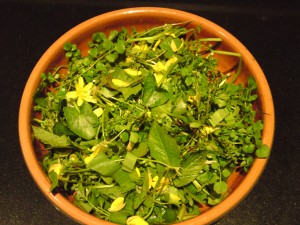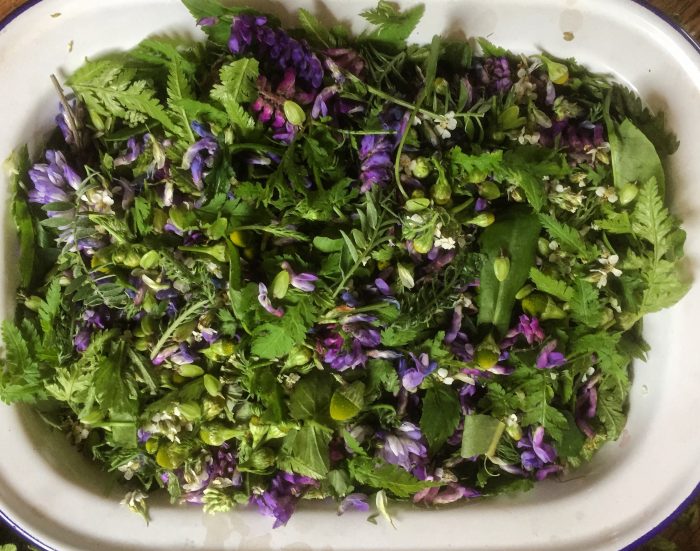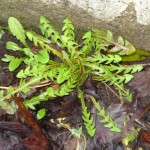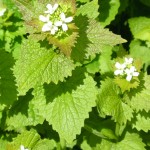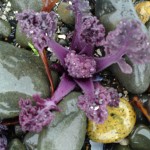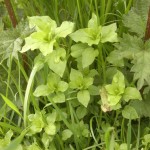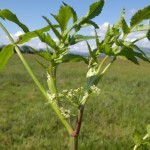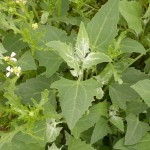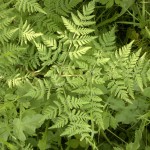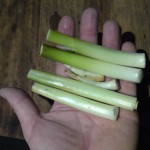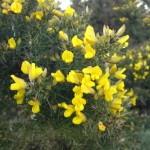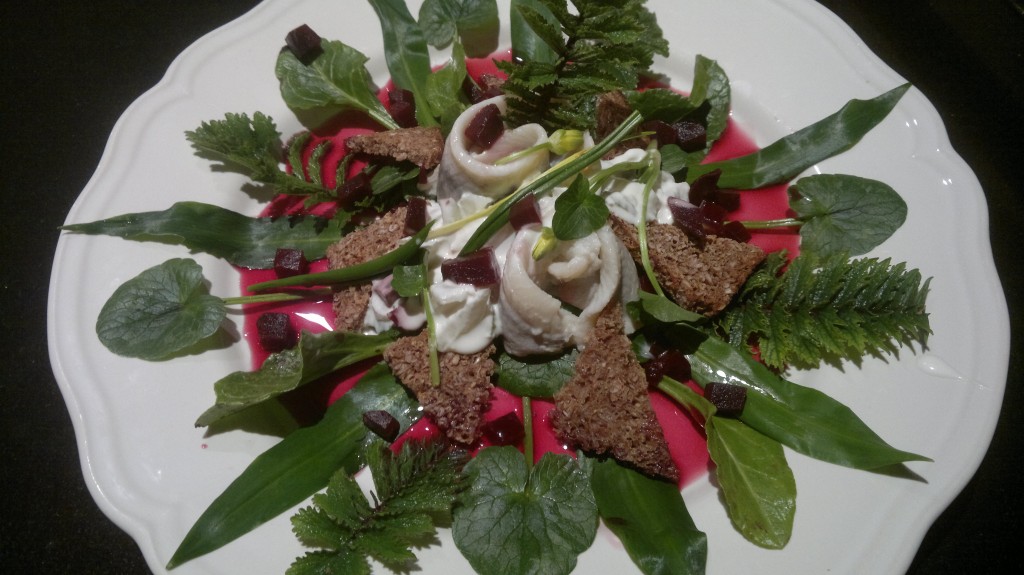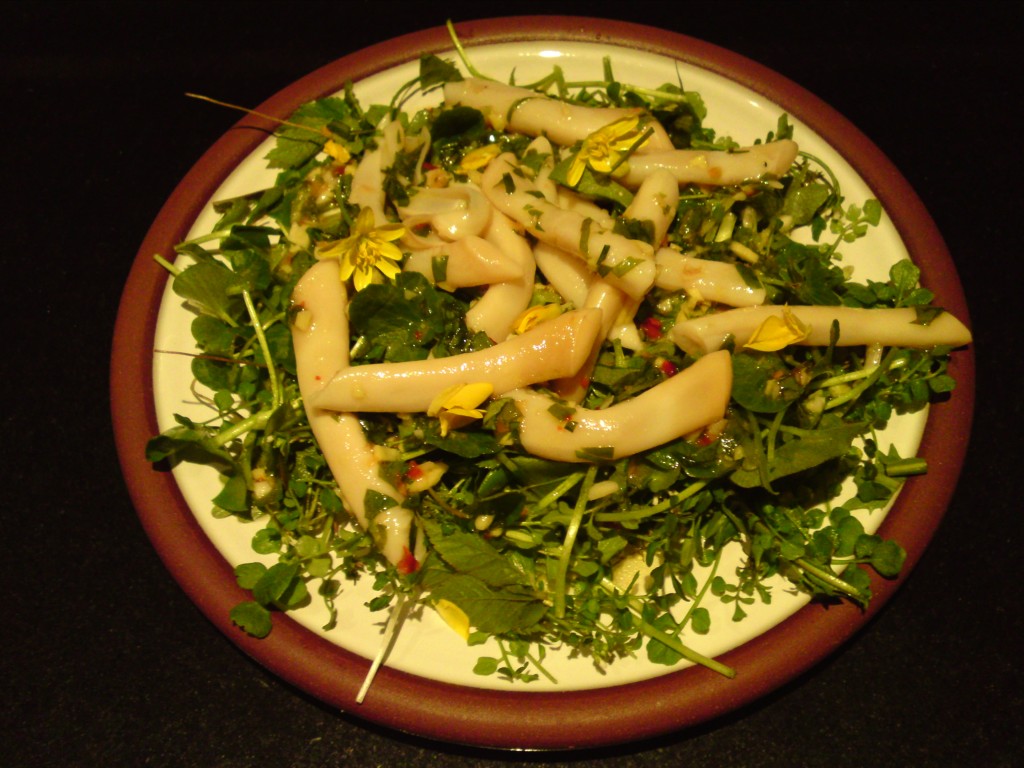Spring and Summer Weed Salads
This isn’t so much a recipe, just some of my thoughts on assembling wild greens and flowers into a palatable salad. One of the many joys of foraging is that you never quite know what range of greens you might come home with, so assembling dishes is responsive act, an interpretation of time and place, rather than some goal-driven imperative.
Gathering a handful of leaves here, a scattering of flowers there, and so on, can soon accumulate into a wonderfully rich array of flavours and textures. Mindful foraging of a place and time fosters biodiverse eating which can be very beneficial for our gut health and general wellbeing, and awakens our digestion and taste buds to the full spectrum of nourishment that humans evolved to eat.
However, there are some general principles of balancing different flavour types that can really help to make a great salad.
Many spring leaves can be pretty sharp and pungent, so I try to balance these with milder ones, and add a few eccentric but complementary extras afterwards. From the following lists, I recommend a ratio of 1:3 pungent to mild, then a judicious scattering of extras, but obviously you can tinker with the proportions according to what you have found and personal preference.
Almost all leaves taste at their best before the plant has flowered, but you will need to be extra careful with your identification at this stage.
Click on links to find out more about each species.
Pungent – Dandelion (left), sea radish, garlic mustard (centre), watercress, bittercress, sea kale young leaves (right), wild garlic, plantain, scurvy grass, rock samphire.
Mild – lesser celandine, ground elder, sea beet, cow parsley, fools watercress (C), chickweed (L), bistort, fat hen, orache (R), hawthorn leaf, scots lovage, bush vetch flowers/shoots.
Extras – wood sorrel, sorrel, broom buds (R), gorse flower, sea kale flower, sweet ciceley leaf (L), primrose flower, reedmace shoot (C), marsh samphire, sea purslane, flowering currant blossoms.
To keep things wild I normally make a simple dressing of walnut oil, elderberry vinegar, seasoning and a little Arran mustard. A scattering of fermented greens and pickled buds sets the whole thing off a treat.
Here are a couple of combinations that I regularly return to…
Related Pages:
